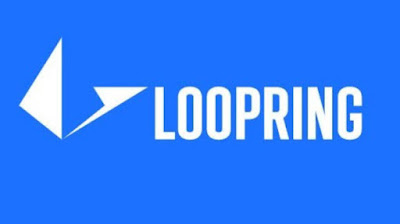What is Loopring (LRC)?
Loopring is a software running on Ethereum that aims to incentivize a global network of users to operate a platform that enables the creation of new types of crypto asset exchanges.
One of an emerging number of decentralized finance (DeFi) protocols, Loopring uses multiple cryptocurrencies, including its own LRC cryptocurrency, to together provide for this platform.
Most notably, Loopring claims its platform will allow exchanges built on top of it to sidestep the slow speeds and high costs associated with decentralized exchanges on Ethereum through the use of a newer type of cryptography called zero-knowledge rollups, or zkRollups.
With zkRollups, Loopring asserts its exchanges can offer faster settlements for traders. Rather than settling trades on the Ethereum blockchain directly (as other decentralized exchanges do), zkRollups enable Loopring exchanges to complete key computations elsewhere.
The idea is that this can reduce the number of transactions that a Loopring exchange will need to submit to the Ethereum network, thus increasing speed and reducing costs for traders.
This is in contrast to other decentralized exchanges, where trades require transactions to be confirmed by the Ethereum network, taking minutes instead of seconds or milliseconds.
History of Loopring.
Loopring's primary objectives include reducing user reliance on centralized exchanges or other trusted third parties and enabling global liquid markets. Loopring protocol pursues this by incentivizing ecosystem participants to perform exchange functions in a decentralized manner, with trades processed by non-custodial smart contracts.
Although blockchains inherently provide trustless trading, there are problems with building exchanges purely on-chain. Specifically, processing speed, throughput, and computation costs. Performing all exchange steps on-chain can be prohibitively expensive, or impossible to emulate centralized exchange speed and performance. For these reasons, Loopring has moved almost all data and computation off-chain but leverages zero-knowledge proofs to retain trust-minimized properties.
Loopring originally planned to be blockchain agnostic and to operate on all feasible large public blockchains with smart contract capability. Loopring was first deployed on Ethereum to trade ERC20 tokens and uses its LRC token to operate. It has deployed on top of NEO
and airdropped a native LRN, however, that effort is paused. There were plans for a similar launch on top of QTUM with an LRQ token but that was scrapped entirely.
How Does Loopring Work?
Loopring’s key value proposition is the cutting-edge cryptography it integrates on its platform.
As such, it’s important to note zkRollups are just one proposed way of making the Ethereum blockchain more suitable for DeFi applications. Competing cryptographic proposals include xDai, Matic, Optimistic Rollups and Plasma.
ZkRollups are considered promising by some advocates, as they take advantage of a known form of cryptography called zero-knowledge proofs, a technique that lets a computer program make a claim about data without actually sharing the data.
As an example, a zero-knowledge proof might enable a government agency to verify that you are above the age required to access a website, without revealing your exact birthdate.
Using this same technique, zkRollups bundle hundreds of transfers into a single transaction, which allows fast and cheap trades to first occur outside the Ethereum blockchain.
These transactions are then settled on the blockchain, where zero-knowledge proofs are used to confirm that off-chain transactions are accurate.
zkRollups on Loopring
In order to begin trading on a Loopring exchange, users must first send their funds to a smart contract managed by the Loopring protocol.
From there, Loopring exchanges move the computation necessary to complete trades off of the main Ethereum blockchain. This includes information such as a user’s account balances and order histories.
Loopring then settles transactions on the Ethereum blockchain to finalize trades between users that were first matched off-chain. These trades are batched to reduce cost and increase speed. Loopring claims it can perform over 2,000 trades per second with this technique.
Each batch of transactions is then added to the Ethereum blockchain with zero-knowledge proofs that allow anyone to reconstruct the transactions that took place off-chain.
This allows users to be confident that the transactions are genuine and that they have not been tampered with by any unwanted parties.
Tags:
Cryptocurrency
